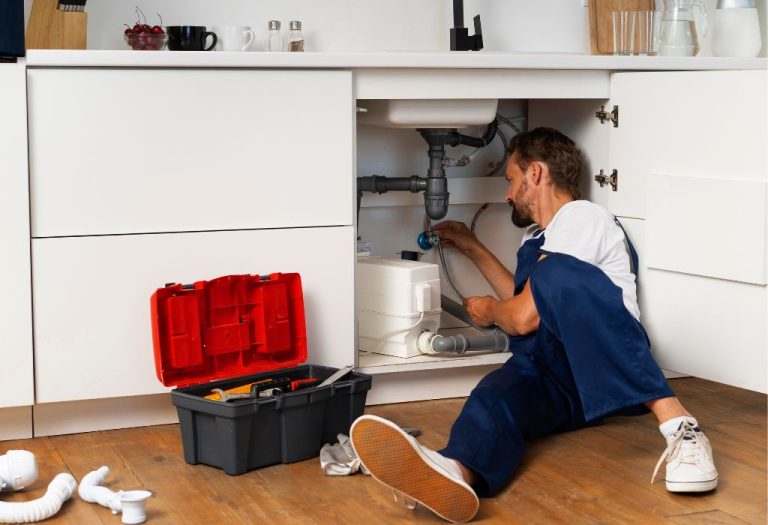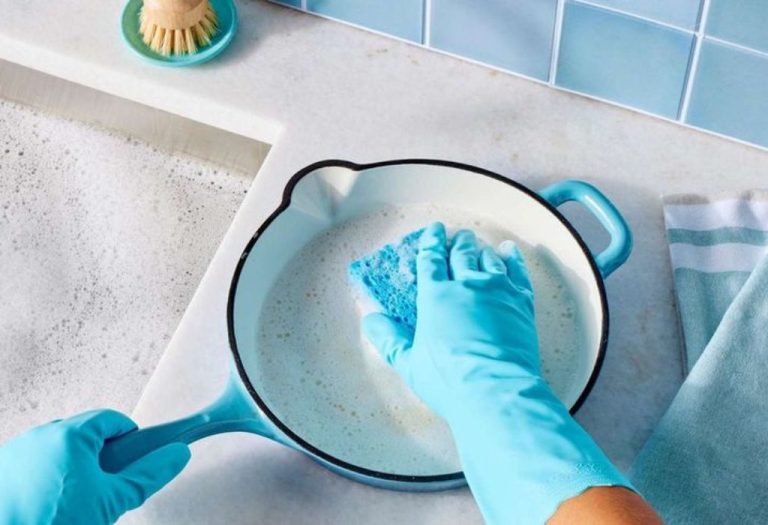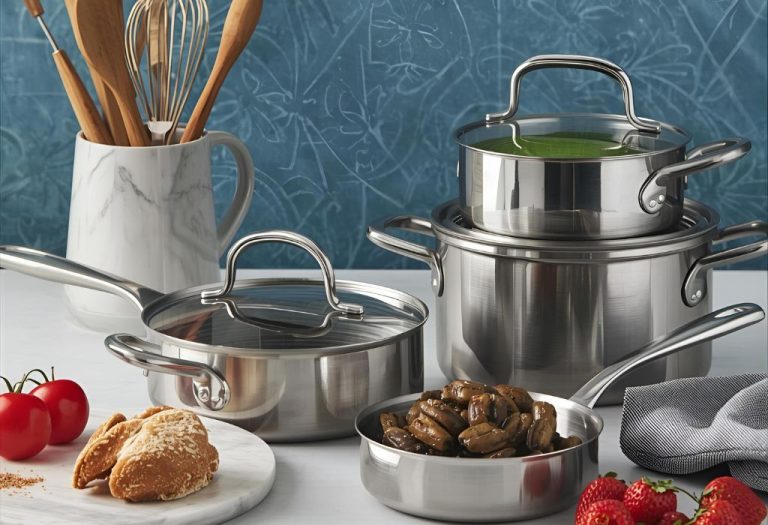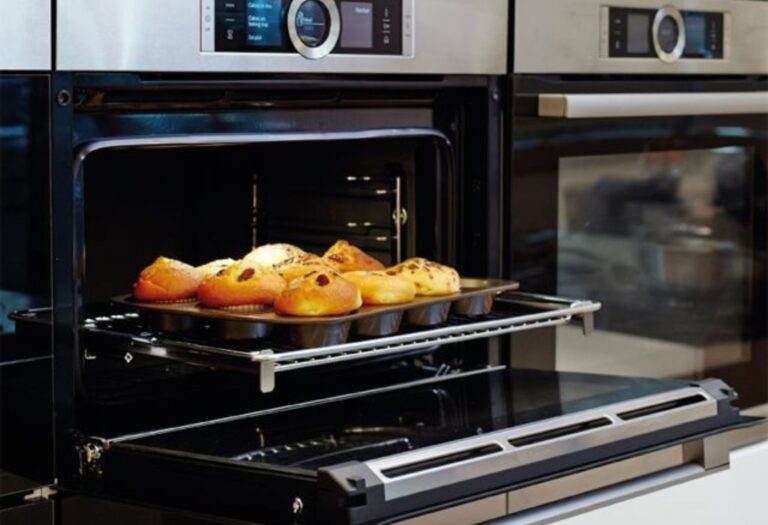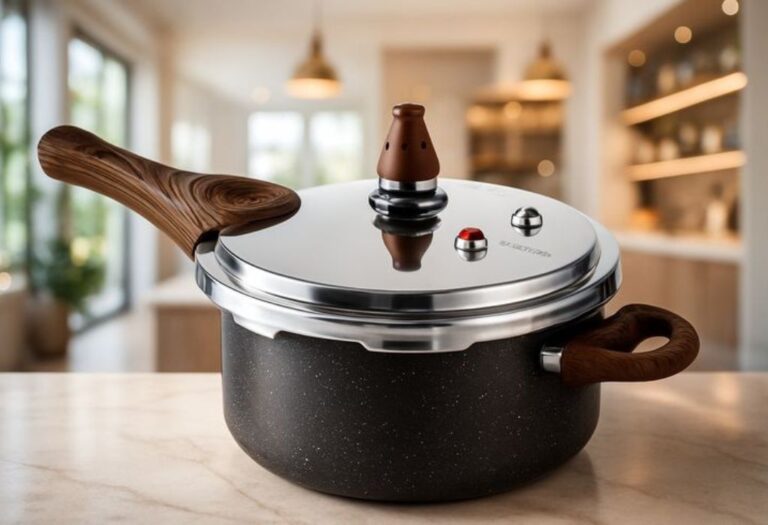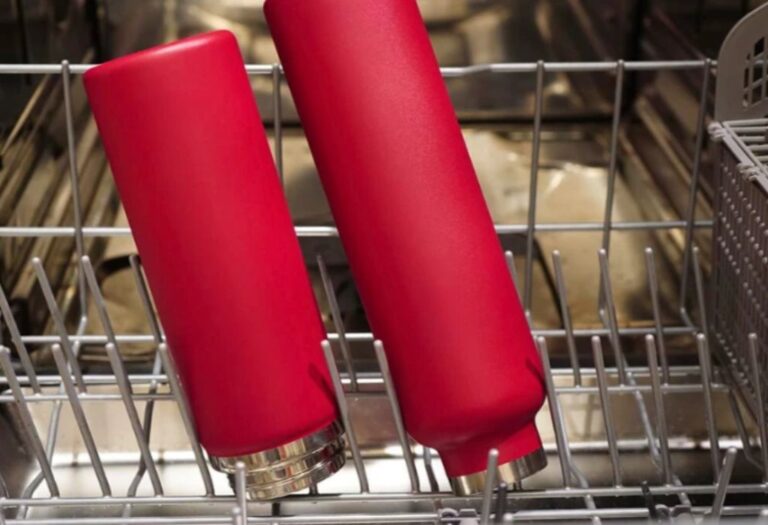A favorite ceramic pan often begins as the shining centerpiece of a kitchen, with its glossy white surface promising effortless non-stick cooking. Yet the sight of scratches etched across the once-smooth coating can bring frustration and disappointment.
These marks are not only cosmetic but can also affect how the pan performs over time. Scratches invite more food residue to cling to the surface, making cooking and cleaning less efficient.
Many home cooks wonder: can you use metal on ceramic cookware without scratches? The curiosity is valid, as metal spatulas and spoons are convenient and widely available.
The benefits of understanding the right approach are clear. By learning what causes scratches, how ceramic coatings react to utensils, and what safer alternatives exist, every kitchen can extend the life of its cookware.
Statistics reinforce the issue. According to Food & Wine, ceramic coatings wear out faster when exposed to abrasive tools, reducing lifespan by nearly 30% (Food & Wine). Another survey from Bon Appétit found that over 80% of manufacturers advise against metal utensils on ceramic surfaces (Bon Appétit).
This article explores why metal is problematic for ceramic pans, when exceptions might exist, and how simple habits ensure cookware remains scratch-free.
Understanding Ceramic Coatings and Metal Contact
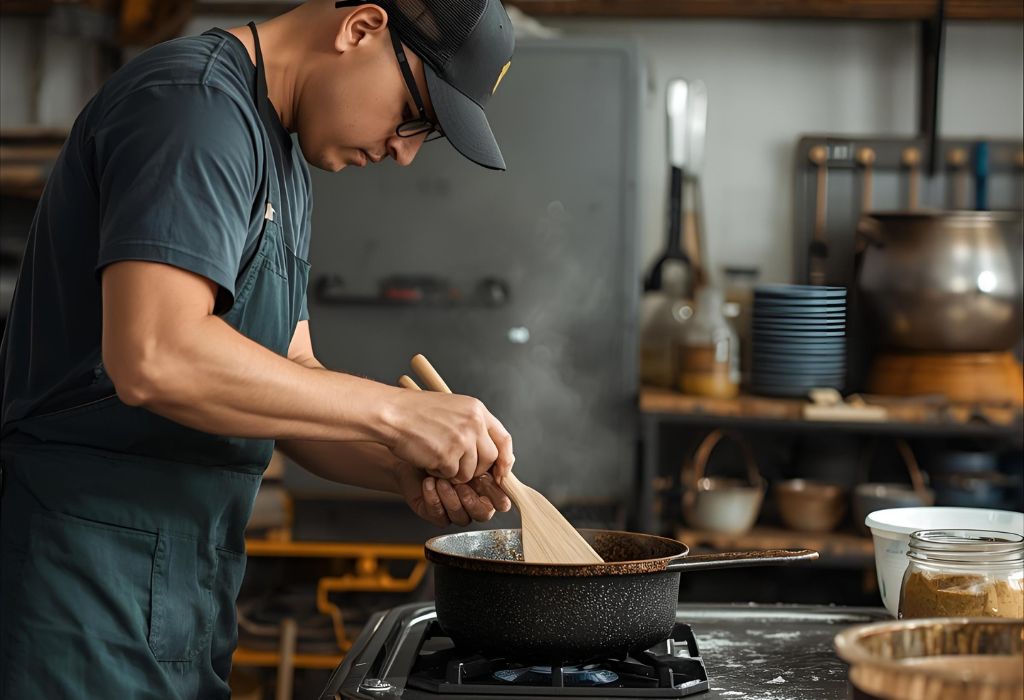
Ceramic cookware is built with a non-stick ceramic coating layered over a metal base. This coating is what gives pans their smooth, slick feel and makes cooking with less oil possible.
The coating, however, is not indestructible. Its surface is delicate and prone to scratches when exposed to sharp edges or repeated pressure.
Metal utensils, such as spatulas, forks, or knives, are the biggest culprits. Even light scraping can etch fine lines that gradually worsen with each use.
While some scratches appear only cosmetic, they compromise the coating by allowing food and oils to lodge deeper into the surface. Over time, this weakens the non-stick effect and accelerates wear.
Cosmetic damage can progress into structural issues. Deep scratches may eventually expose the metal core beneath the coating, making the pan less safe and more prone to rust.
Understanding how ceramic responds to pressure and abrasion is essential. This knowledge forms the foundation for better decisions about which utensils to use and how to handle cookware in daily practice.
When Metal Might Be Acceptable — Risks and Realities
Some manufacturers acknowledge that occasional use of metal utensils may not destroy ceramic pans immediately. Flat stainless-steel spatulas, used gently, might leave only minor marks that are cosmetic rather than catastrophic.
The reality, however, is that frequent use of metal utensils increases the likelihood of scratches. Each scrape removes a tiny fraction of the protective coating, slowly degrading the surface.
Cooking habits also matter. Using metal on ceramic cookware while applying pressure or cutting food directly in the pan magnifies the risk. A gentle flip may seem harmless, but repeated scraping compounds damage over time.
Consumers may also encounter mixed messages. A few brands market their ceramic pans as “metal utensil safe,” but this claim is often based on controlled testing rather than real kitchen use. Even in those cases, longevity is still reduced compared to using softer utensils.
The safest conclusion is that while metal utensils might not ruin a pan instantly, their long-term effect is undeniably harmful. Consistent reliance on gentler materials is the better choice for durability.
Best Practices — Preferred Utensils for Ceramic Cookware
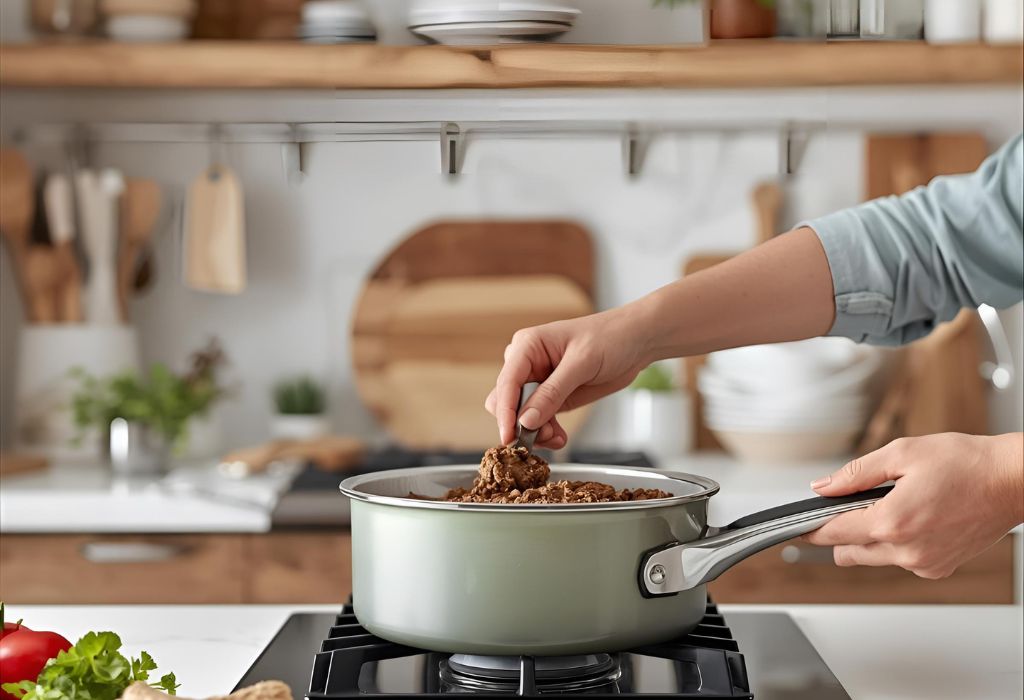
The easiest way to prevent scratches is to avoid metal altogether. Safer alternatives exist that perform equally well without compromising the coating.
Wooden utensils are classic options. Their soft edges glide over ceramic without leaving marks, and they remain durable through years of use.
Silicone tools have become popular for modern kitchens. Heat-resistant and flexible, silicone spatulas and spoons handle high temperatures while protecting delicate surfaces.
Nylon utensils also offer a safe alternative. While slightly less durable than silicone, they are gentle on ceramic coatings and easy to replace.
These materials ensure that food can be stirred, flipped, and served without scratching the non-stick surface. Choosing the right utensil is a small adjustment that delivers a large benefit in preserving cookware.
Brands such as Caraway and GreenPan strongly recommend wooden, silicone, or nylon tools to extend the lifespan of their products (Caraway, GreenPan).
Heat and Cleaning Habits That Protect
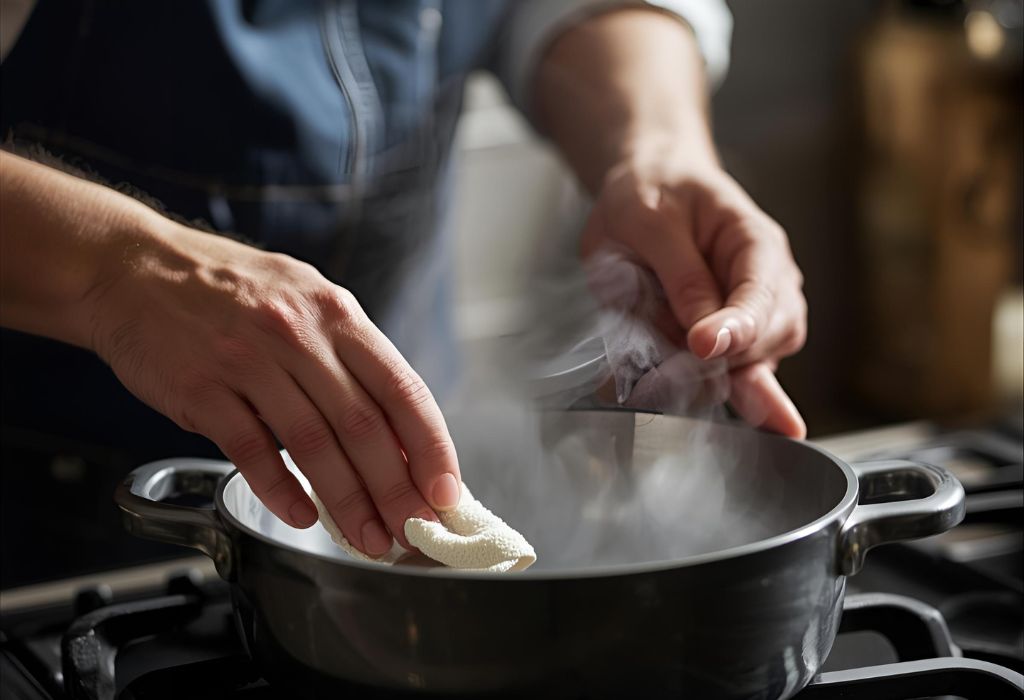
Even without metal utensils, poor cooking and cleaning habits can shorten the life of ceramic cookware. Proper maintenance is equally important as utensil choice.
Cooking on high heat accelerates wear. Ceramic coatings are designed for low to medium temperatures, where they retain their non-stick qualities without stress. Exposing them to excessive heat makes them more brittle and vulnerable to scratches.
Cleaning practices matter too. Dishwashers combine harsh detergents with high water temperatures that degrade the coating. Hand washing with mild soap and a soft sponge is the recommended method.
Abrasive pads or steel wool are as harmful as metal utensils. They scrape away the surface layer and leave scratches that attract more residue. Soaking stubborn food in warm, soapy water is a safer solution.
Proper storage also prevents damage. Stacking pans directly on one another risks surface scratches. Using soft pan protectors, cloths, or hanging pans individually helps preserve their finish.
These small adjustments create a protective routine that ensures ceramic pans remain glossy, non-stick, and reliable over the years.
Trade-Offs — Longevity vs. Convenience
Ceramic cookware has gained popularity because it is considered non-toxic, eco-friendly, and naturally non-stick. It allows for healthier cooking without synthetic coatings like PTFE.
The trade-off is durability. Ceramic surfaces are more delicate than traditional non-stick coatings, requiring careful use and cleaning.
Using metal utensils offers short-term convenience but risks long-term costs. Replacing scratched pans sooner is often the result of careless habits.
For many households, investing in a set of safe utensils is more cost-effective than buying new cookware every few years. Wooden, silicone, and nylon tools are inexpensive compared to replacing ceramic pans prematurely.
Longevity depends on choices made daily in the kitchen. Prioritizing preservation over convenience ensures better performance and less waste.
Consumers who respect the delicate nature of ceramic cookware enjoy longer use and greater satisfaction with their investment.
Conclusion
The question can you use metal on ceramic cookware without scratches highlights the tension between convenience and care. While occasional use of metal may not destroy a pan immediately, it inevitably increases the risk of cosmetic and structural damage.
Ceramic coatings thrive when paired with the right practices. Using wooden, silicone, or nylon utensils, cooking at moderate temperatures, hand washing gently, and storing cookware carefully all work together to prevent scratches.
The reward is clear. Ceramic pans remain non-stick, attractive, and durable for far longer when protected from metal contact.
I’m Emma J. Caldwell, the founder, lead writer, and home-cooking enthusiast behind KitchenGuideCo.com. With a background in culinary arts and over a decade of cooking experience in both professional and personal kitchens, I created this platform to demystify recipes, offer smart kitchen gadget reviews, and guide readers through meal prep with confidence and clarity.

